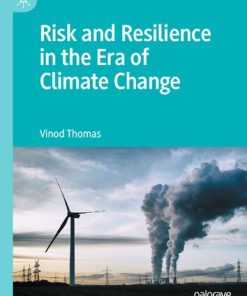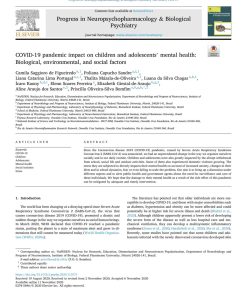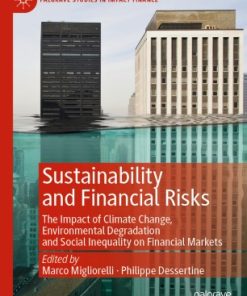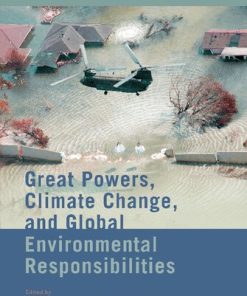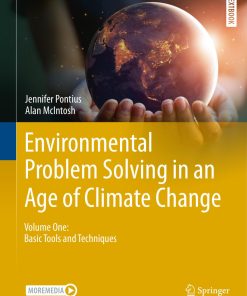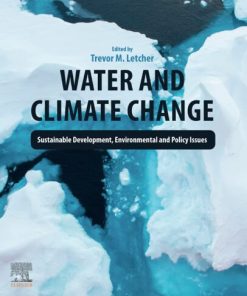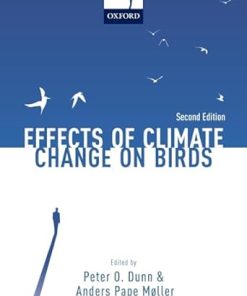(EBook PDF) Environmental Resilience and Transformation in Times of COVID 19 Climate Change Effects on Environmental Functionality 1st edition by Ramanathan 0323858031 9780323858038 full chapters
$50.00 Original price was: $50.00.$25.00Current price is: $25.00.
Environmental Resilience and Transformation in Times of COVID-19: Climate Change Effects on Environmental Functionality 1st edition by A.L. Ramanathan – Ebook PDF Instant Download/DeliveryISBN: 0323858031, 9780323858038
Full dowload Environmental Resilience and Transformation in Times of COVID-19: Climate Change Effects on Environmental Functionality 1st edition after payment.
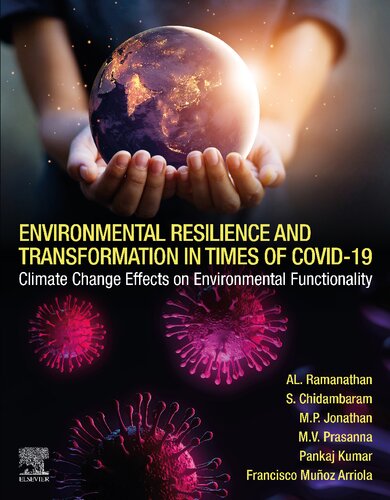
Product details:
ISBN-10 : 0323858031
ISBN-13 : 9780323858038
Author: Ramanathan
Environmental Resilience and Transformation in Times of COVID-19: Climate Change Effects on Environmental Functionality is a timely reference to better understand environmental changes amid the COVID-19 pandemic and the associated lockdowns. The book is organized into five themes: (1) environmental modifications, degradation, and human health risks; (2) water resources—planning, management, and governance; (3) air quality—monitoring, fate, transport, and drivers of socioenvironmental change; (4) marine and lacustrine environment; and (5) sustainable development goals and environmental justice. These themes provide an insight into the impact of COVID-19 on the environment and vice versa, which will help improve environmental management and planning, as well as influence future policies.
Environmental Resilience and Transformation in Times of COVID-19: Climate Change Effects on Environmental Functionality 1st Table of contents:
Part I Environmental modifications, degradation and human health risks
Chapter 1 COVID-19: a wake-up call to protect planetary health
Abstract
1.1 Emerging infectious disease, COVID-19, and planetary health
1.2 Lockdown as a temporary respite for the environment
1.3 Pandemic reclaiming the plastic usage: demand, production, and usage
1.4 Waste management: the intensifying crisis
1.5 Ocean pollution and landfills
1.6 Exacerbated inequalities and vulnerabilities
1.7 Recommendations
1.8 COVID-19 calls for reflection—conclusion
References
Chapter 2 Zoonotic disease in the face of rapidly changing human–nature interactions in the Anthropocene
Abstract
2.1 Introduction: why zoonotic diseases can be a concern in the Anthropocene
2.2 Resilience and its change due to biodiversity loss and diseases
2.3 The case of zoonotic diseases
2.4 Possible measures to fight next pandemics with concept of resilience
2.5 Conclusion
References
Chapter 3 Impact of Covid-19 lockdown on the socioenvironmental scenario of Indian Sundarban
Abstract
3.1 Introduction
3.2 Impact on air and water quality
3.3 Natural regeneration of biodiversity
3.4 Migration of labor from other States
3.5 Conclusion
References
Chapter 4 Changes in nighttime lights during COVID-19 lockdown over Delhi, India
Abstract
4.1 Introduction
4.2 Study area and data used
4.3 Methodology
4.4 Results and discussion
4.5 Conclusions and recommendations
Acknowledgements
References
Chapter 5 Socio-environmental factors affecting mental health of people during Covid-19 in coastal urban areas of Bangladesh
Abstract
5.1 Introduction
5.2 Method
5.3 Results
5.4 Conclusion
Appendix 1
References
Chapter 6 Mitigating transboundary risks by integrating risk reduction frameworks of health and DRR:A perspective from COVID-19 pandemic
Abstract
6.1 Introduction
6.2 Impacts of transboundary disasters
6.3 Existing risk reduction frameworks and their gaps/challenges
6.4 A comparison of responses to COVID-19 by India and Japan
6.5 Measures for strengthening risk reduction frameworks
6.6 Conclusions
Acknowledgments
References
Part II Water resources: Planning, management and governance
Chapter 7 An overview of Kuwait’s water resources and a proposed plan to prevent the spread of the Novel Corona Virus (COVID-19) pandemic through Kuwait’s water supply facilities and groundwater system
Abstract
7.1 Prelude
7.2 Introduction
7.3 Sources of water
7.4 Current status of water availability and consumption
7.5 Possible spread of the Novel Corona Virus through water facilities
7.6 Monitoring of water quality and collection of water samples
7.7 Preservation, analysis, and treatment of water samples
7.8 Concluding remarks
Acknowledgments
References
Chapter 8 Survival of SARS-COV-2 in untreated and treated wastewater—a review
Abstract
8.1 Introduction
8.2 SARS-COV-2 in treated and untreated wastewater
8.3 Transmission through wastewater
8.4 Impact
8.5 Future research needs to be carried out
Acknowledgment
Conflict of interest
References
Chapter 9 Wastewater discharge and surface water contamination pre- and post- COVID 19—global case studies
Abstract
9.1 Introduction
9.2 Presence in aquatic environment
9.3 Persistence and removal
9.4 Wastewater-based epidemiology
9.5 Case studies
9.6 Environmental implications and policies
9.7 Conclusion
References
Chapter 10 Addressing associated risks of COVID-19 infections across water and wastewater service chain in Asia
Abstract
10.1 Introduction
10.2 SARS-CoV-2 in feces and wastewater
10.3 Addressing potential risks associated with water and wastewater services
10.4 Regular virus surveillance in wastewater for COVID-19
10.5 Conclusions and recommendations
References
Chapter 11 Governance of wastewater surveillance systems to minimize the impact of COVID-19 and future epidemics:Cases across Asia-Pacific
Abstract
11.1 State of COVID-19 in selected countries
11.2 Wastewater surveillance of COVID-19
11.3 Wastewater management in selected countries
11.4 Stakeholders for wastewater monitoring
11.5 Legislation and frameworks
11.6 Challenges and opportunities
11.7 Recommendations
Acknowledgments
References
Laws and regulations
Chapter 12 Impact of COVID-19 lockdown on real-time DO–BOD variation of river Ganga
Abstract
12.1 Introduction
12.2 Impact of lockdown on main stem of river Ganga
12.3 Impact of lockdown on river Ganga tributaries
12.4 Conclusion
References
Chapter 13 Covid-19 and opportunity for integrated management of water–energy–food resources for urban consumption
Abstract
13.1 Introduction
13.2 Methodology
13.3 Result and discussion
13.4 Integrated mitigation measures
13.5 Conclusion
References
Chapter 14 COVID-19 lockdown impacts on biochemical and microbiological parameters in southern Indian coast
Abstract
14.1 Introduction
14.2 Major coastal activities influenced by COVID-19 pandemic
14.3 COVID-19 lockdown impacts of biochemical and microbiological parameters on South Indian coasts
14.4 Effects of gas emissions with coastal water quality
14.5 Refusing on phytoplankton biomass and NO2 emissions
14.6 Conclusion
References
Part III Air quality: Monitoring, fate, transport, and drivers of socio-environmental change
Chapter 15 Air quality index and criteria pollutants in ambient atmosphere over selected sites:Impact and lessons to learn from COVID-19
Abstract
15.1 Introduction
15.2 Data source and data collection point
15.3 Results
15.4 Summary
Acknowledgments
References
Chapter 16 Study of the aerosol parameters and radiative forcing during COVID-19 pandemic over Srinagar Garhwal, Uttarakhand
Abstract
16.1 Introduction
16.2 Site description and meteorology
16.3 Result and discussions
16.4 Conclusions
Acknowledgments
References
Chapter 17 A safe and effective sample collection method for assessment of SARS-CoV-2 in aerosol samples
Abstract
17.1 Introduction
17.2 Novel aerosol sampling method
17.3. Trizol versus phosphate buffer solution as collection medium
17.4 Next generation-based applications
17.5 Conclusions
References
Chapter 18 Meteorological parameters and COVID-19 spread-Russia a case study
Abstract
18.1 Introduction
18.2 Study area
18.3 Methodology
18.4 Results and discussion
18.5 Conclusion
References
Chapter 19 Short-Term resilience and transformation of urban socioenvironmental systems to COVID-19 lockdowns in India using air quality as proxy
Abstract
19.1 Introduction
19.2 Area of study and its components
19.3 Conceptualization of NAMUSS resilience to COVID-19
19.4 Methodology
19.5 Results and discussion
19.6 Conclusion
Acknowledgements
References
Chapter 20 Covid-19 Pandemic-changes in the context of global environment and lessons learned
Abstract
20.1 Introduction
20.2 The pros and cons of Covid-19 worldwide
20.3 Lessons learned from the current crisis
20.4 Conclusions
Abbreviations
References
Part IV Marine and lacustrine environment
Chapter 21 Coral reefs: globally predicted climate change impact mitigation, mediated by the marine flora and their ecosystem connectivity, with a case study from Neil Island (the Andamans)
Abstract
21.1 Introduction
21.2 Mangroves: A refuge for coral reefs in times of climate change
21.3 Seagrasses in enhancing reef resilience potential
21.4 Reefs–seaweeds interactions in the troubled ocean
21.5 Ecosystem connectivity between mangroves, seagrasses and coral reefs
21.6 Coastal and marine faunal resources of the Neil Island (the Andamans) – A case study
21.7 Fishes
21.8 Conclusion
Acknowledgement
References
Chapter 22 Temporal variability (1966–2020) of the fish assemblage and hydrometeorology of the Tampamachoco Lagoon, Veracruz, Mexico:Pre-and during Covid-19 scenario
Abstract
22.1 Introduction
22.2 Study area
22.3 Methods
22.4 Results
22.5 Discussion
22.6 The COVID-19 pandemic scenario
22.7 Conclusions
Abbreviations
Acknowledgments
References
Chapter 23 Socio-economic and environmental impacts of COVID-19 pandemic: Building resilience of the seven lakes of San Pablo city, Philippines
Abstract
23.1 Introduction
23.2 COVID-19 cases in the Philippines
23.3 COVID-19 cases in San Pablo city
23.4 Effects of COVID-19 pandemic on the environment
23.5 Effects of the pandemic on society and economy
23.6 Resilience
23.7 Summary and lessons learned
23.8 Acknowledgement
References
Part V Sustainable development goals and environmental justice
Chapter 24 Impacts and implications of the COVID-19 crisis and its recovery for achieving sustainable development goals in Asia A review from an SDG interlinkage perspective
Abstract
24.1 Introduction
24.2 Methodology of the SDG interlinkage analysis
24.3 Impacts of COVID-19 on SDGs
24.4 Implications of COVID-19 measures for achieving the SDGs: A review from an SDG interlinkage perspective
24.5 Discussion
24.6 Conclusion
24.7 Acknowledgements
References
Chapter 25 The COVID-19 impacts on India’s low carbon infrastructure
Abstract
25.1 Introduction
25.2 Impact on renewable energy infrastructure
25.3 Challenges to the deveopment of low carbon infrastructure and smart cities
25.4 Responses towards the impact on low carbon infrastructure
25.5 Conclusion
References
Chapter 26 Green spaces resume their importancein cities after the COVID-19 pandemicA case of study from Mexico City
Abstract
26.1 Introduction
26.2 Cities as epicentres for the spread of the coronavirus
26.3 Agenda 2030 and the sustainable development goals
26.4 Mexico City: A case study
26.5 Reflections
26.6 Conclusions
26.7 Acknowledgement
References
Chapter 27 Climate change, adaptation and gender concernsApproaches and learnings from global and Indian experiences
Abstract
27.1 Introduction
27.2 Gender differentiated impacts of climate change
27.3 The state of gender representation in global climate agenda
27.4 The global gender agenda
27.5 Adding a gender perspective to climate actions
27.6 Recognition of gender considerations in climate actions in India
27.7 Approaches and learnings from India
27.8 Results/outcomes
27.9 Key learnings and conclusion
References
Chapter 28 Urban housing in the metropolitan area of the Mexico City, in the context of climate change and the COVID 19 pandemic
Abstract
28.1 Introduction
28.2 Climate change in the world, origins of its study
28.3 Climate change in Mexico in the 21st century
28.4 Mexico’s urban areas in the 21st Century
28.5 COVID-19 pandemic in Mexico and the world
28.6 The study of urban housing in Mexico during the COVID-19 pandemic
28.7 Characterization of the surveyed subjects living in the urban dwellings studied
28.8 Characteristics of urban dwellings registered in the survey
28.9 Problems in the urban areas of the metropolitan area of Mexico City during and post COVID-19 pandemic
28.10 Recommendations for the sustainable and resilient design of the urban spaces studied
28.11 Housing problems in urban areas of the metropolitan area of Mexico City studied
28.12 Recommendations for urban dwellings in the metropolitan area of Mexico City studied
28.13 Conclusions
References
Chapter 29 COVID-19 as an opportunity to make field-based earth sciences and other similar courses easily accessible and affordable
Abstract
29.1 Introduction
29.2 Background
29.3 Materials and methods
29.4 Results and interpretations
29.5 Discussion
29.6 Conclusion
29.7 Acknowledgement
References
Chapter 30 Livelihood and health vulnerabilities of forest resource-dependent communities amidst the COVID-19 pandemic in southwestern regions of Bangladesh
Abstract
30.1 Introduction
30.2 COVID-19 pandemic situation and its impacts on forest resource-dependent communities
30.3 The Sundarbans forest of Bangladesh and the resource-dependent communities
30.4 Materials and methods
30.5 Impact assessment of COVID-19 on the Sundarbans forest-dependent communities
30.6 Coping strategies of the Sundarbans forest-dependent communities in the pandemic situation
30.7 Conclusion and recommendations
30.8 Appendix
References
Chapter 31 Sustainable utilization of natural resources for socio-environmental resilience and transformation in the mountains of Nepal
Abstract
31.1 Natural resources and environment: background
31.2 Local and indigenous practices
31.3 Policies, programs, and institutions
31.4 COVID-19 and changing scenario on mountain economy
31.5 Resilience and transformation through sustainable utilization
31.6 Summary
References
Chapter 32 How resilient are mountain livelihoods against extreme events? Learnings from Central Mexico in a COVID-19 world
Abstract
32.1 Introduction
32.2 Methods and material
32.3 Results and discussion
32.4 Conclusions
32.5 Credit author statement
32.6 Declaration of competing interest
Acknowledgement
Abbreviations
References
Chapter 33 Significance of conventional Indian foods acting as immune boosters to overcome COVID-19
Abstract
33.1 Introduction
33.2 Methodology
33.3 Results and discussion
33.4 Conclusion
References
Chapter 34 COVID-19 pandemic impact on food security and food system of India:Lessons for future
Abstract
34.1 Introduction
34.2 COVID pandemic: Food security and food system of India
34.3 COVID pandemic impact on food system productive attribute of India
34.4 COVID pandemic and food security in India
34.5 COVID pandemic and future lessons
34.6 Conclusion
People also search for Environmental Resilience and Transformation in Times of COVID-19: Climate Change Effects on Environmental Functionality 1st
environmental resilience jobs
ecological resilience examples
what is sustainability and resilience
define resilience proof resilience and modulus of resilience
environmental sustainability and resilience
You may also like…
Politics & Philosophy - Social Sciences
Politics & Philosophy - Social Sciences
Earth Sciences - The Environment
Earth Sciences - The Environment
Uncategorized




